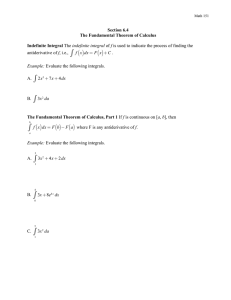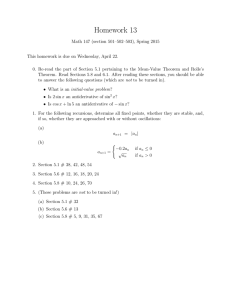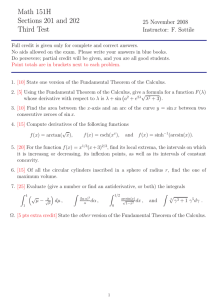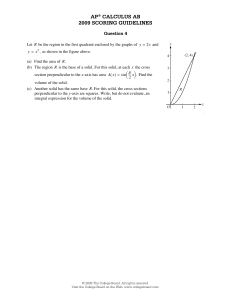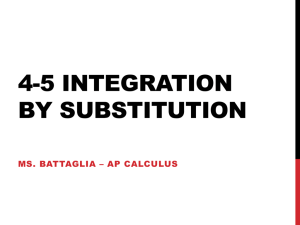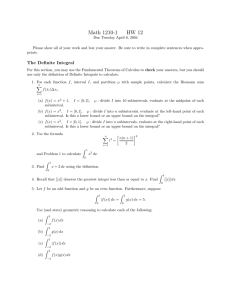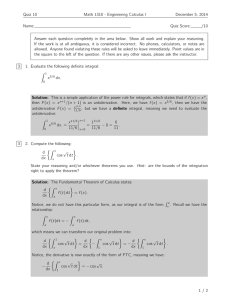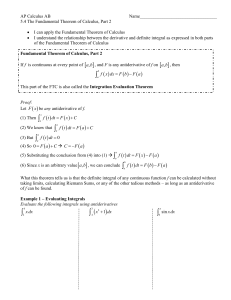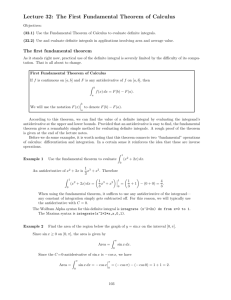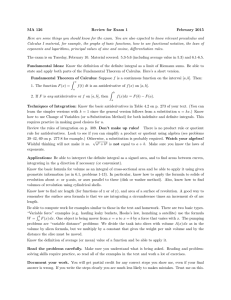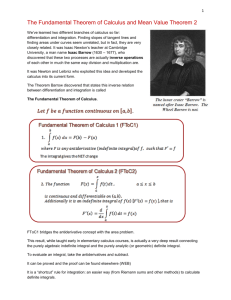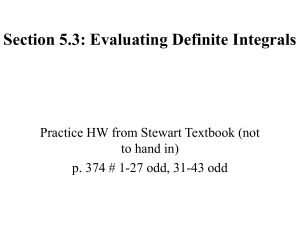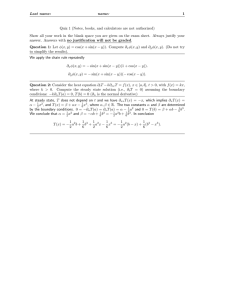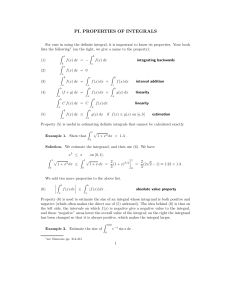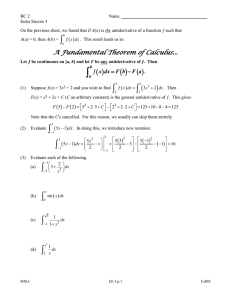5.c
advertisement
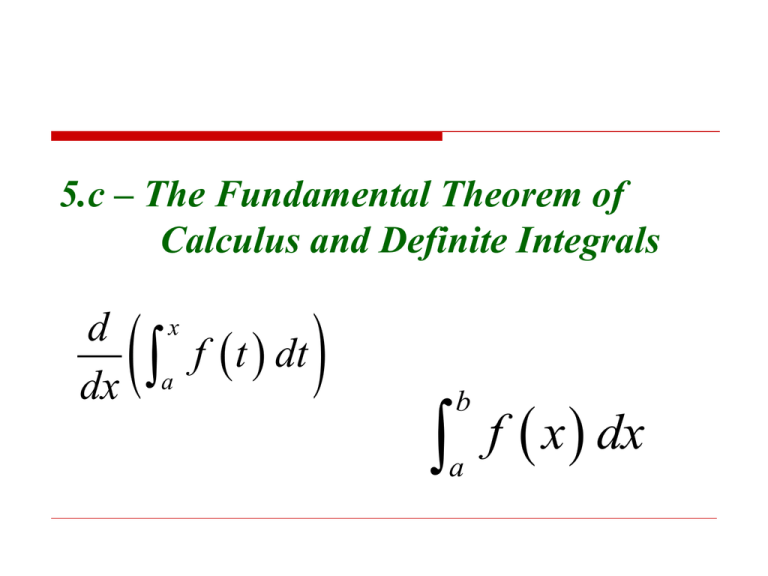
5.c – The Fundamental Theorem of Calculus and Definite Integrals d dx x a f t dt b a f x dx Examples The definite integral of f (x) from x = a to x = b is denoted b a f x dx f(x) is called the integrand, a the lower limit of integration, and b the upper limit of integration. The First Fundamental Theorem of Calculus If F x f ( x ) dx be the general antiderivative of f x , then f x dx F b F a F x F ( x) Calculator : fnInt f x , x, a, b b b b a a a MATH | 9 or ALPHA | F2 on newer models Basic Properties of the Indefinite Integral Let a, b, and c be constants and f and g be continuous functions on [a, b]. 1. 2. 3. 4. f x dx f x dx a b b a f x g x dx f x dx a a b b a b g x dx b a c f x dx c f x dx b a f x dx f x dx f x dx; c b c a a b a bc 4 Examples Evaluate: 1. 8 1 2. /4 0 2 3 x 2 dx sec t tan t dt 1 3. 10 x dx 0 4. 2 2 if 2 x 0 2 f x dx where f x 2 4 x if 0 x 2 Definite Integrals With The Substitution Rule If u = g(x) is a differentiable function whose range is an interval I and f is continuous on I, then b a f g x g x dx g (b ) g (a) f u du Properties of Odd and Even: Suppose f is continuous on [– a, a]. (a) If f is even f x f x , then f ( x)dx 2 f ( x)dx. a 0 a a (b) If f is odd f x f x , then f ( x)dx 0. a a 6 Examples - Evaluate Evaluate by changing your limits of integration to values that are in terms of u. 4 x 2 5. x cos x dx 8. dx 0 0 1 2x 1 1 1/ 2 sin 2 x x 6. xe dx 9. dx 0 0 1 x2 2 / 2 x sin x 7. dx 6 / 2 1 x 7 First Fundamental Theorem of Calculus (Alternate Definition) We’ve shown that f x dx represents the general antiderivative of f with respect to x. It follows that the derivative of the antiderivative should return the original function (that is, the integrand). d dx Upper Limit Must Be Variable Part x a d f t dt F ( x ) F (a ) f x dx Lower Limit Must Be Numerical Part t is called a dummy variable. Examples Evaluate the following derivatives. d 1 3 11. t dt dx x d x 10. cos t dt dx 1 d 13. dx x 1 ln t dt d x 3 15. dt dx 3 t 2 5t d x 1 12. dt 2 dx 2 1 t d 16. dx d 14. du u 1 2 x 9 csc t dt cos t 2 dt Examples Let u is some function of x. Use WolframAlpha to determine the following: d sin x 5 17. r dr dx 1 d 2 18. cos t dt 4 dx x 3 x d u f t dt derivative integral f (t ), t , a, u , x dx a First Fundamental Theorem of (Generalized) If f is continuous on [a, b] and u is an unknown, differentiable function of x, then d dx u a f t dt f ___ _____ Examples Evaluate d e2 x 19. 2 t sin t dt dx d 20. dx 1 5 sec t t dt ln x
